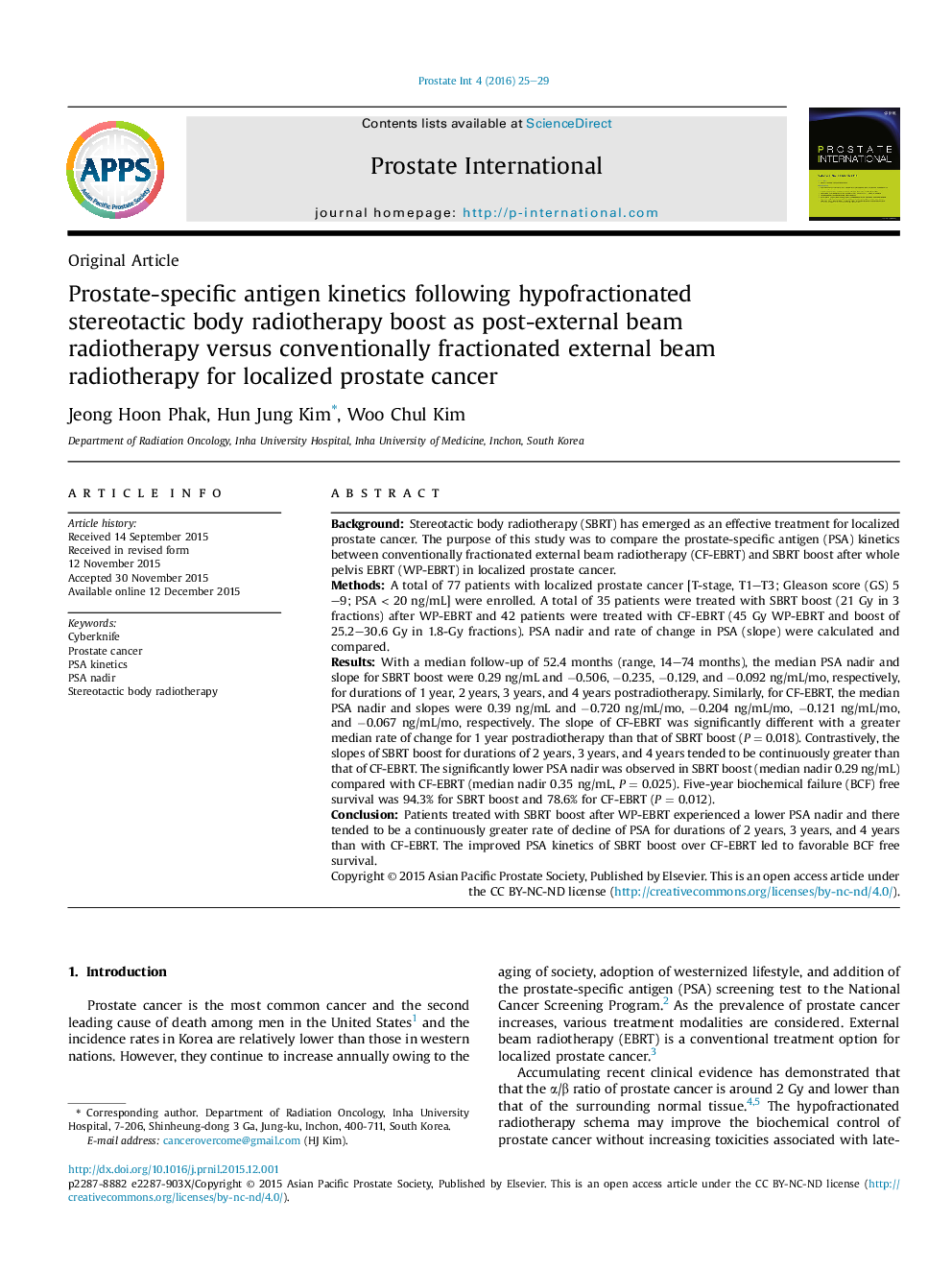| کد مقاله | کد نشریه | سال انتشار | مقاله انگلیسی | نسخه تمام متن |
|---|---|---|---|---|
| 4274082 | 1285235 | 2016 | 5 صفحه PDF | دانلود رایگان |
BackgroundStereotactic body radiotherapy (SBRT) has emerged as an effective treatment for localized prostate cancer. The purpose of this study was to compare the prostate-specific antigen (PSA) kinetics between conventionally fractionated external beam radiotherapy (CF-EBRT) and SBRT boost after whole pelvis EBRT (WP-EBRT) in localized prostate cancer.MethodsA total of 77 patients with localized prostate cancer [T-stage, T1–T3; Gleason score (GS) 5–9; PSA < 20 ng/mL] were enrolled. A total of 35 patients were treated with SBRT boost (21 Gy in 3 fractions) after WP-EBRT and 42 patients were treated with CF-EBRT (45 Gy WP-EBRT and boost of 25.2–30.6 Gy in 1.8-Gy fractions). PSA nadir and rate of change in PSA (slope) were calculated and compared.ResultsWith a median follow-up of 52.4 months (range, 14–74 months), the median PSA nadir and slope for SBRT boost were 0.29 ng/mL and −0.506, −0.235, −0.129, and −0.092 ng/mL/mo, respectively, for durations of 1 year, 2 years, 3 years, and 4 years postradiotherapy. Similarly, for CF-EBRT, the median PSA nadir and slopes were 0.39 ng/mL and −0.720 ng/mL/mo, −0.204 ng/mL/mo, −0.121 ng/mL/mo, and −0.067 ng/mL/mo, respectively. The slope of CF-EBRT was significantly different with a greater median rate of change for 1 year postradiotherapy than that of SBRT boost (P = 0.018). Contrastively, the slopes of SBRT boost for durations of 2 years, 3 years, and 4 years tended to be continuously greater than that of CF-EBRT. The significantly lower PSA nadir was observed in SBRT boost (median nadir 0.29 ng/mL) compared with CF-EBRT (median nadir 0.35 ng/mL, P = 0.025). Five-year biochemical failure (BCF) free survival was 94.3% for SBRT boost and 78.6% for CF-EBRT (P = 0.012).ConclusionPatients treated with SBRT boost after WP-EBRT experienced a lower PSA nadir and there tended to be a continuously greater rate of decline of PSA for durations of 2 years, 3 years, and 4 years than with CF-EBRT. The improved PSA kinetics of SBRT boost over CF-EBRT led to favorable BCF free survival.
Journal: Prostate International - Volume 4, Issue 1, March 2016, Pages 25–29
